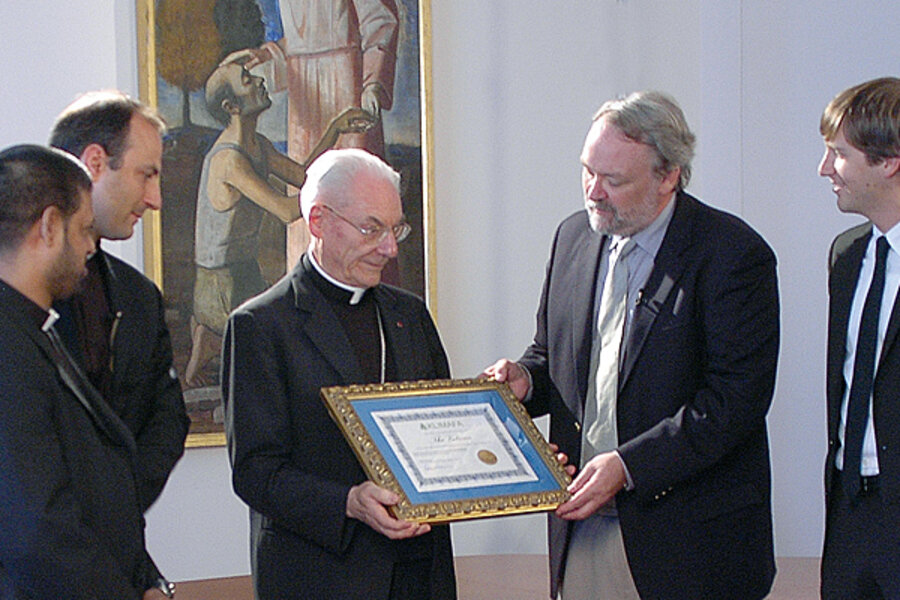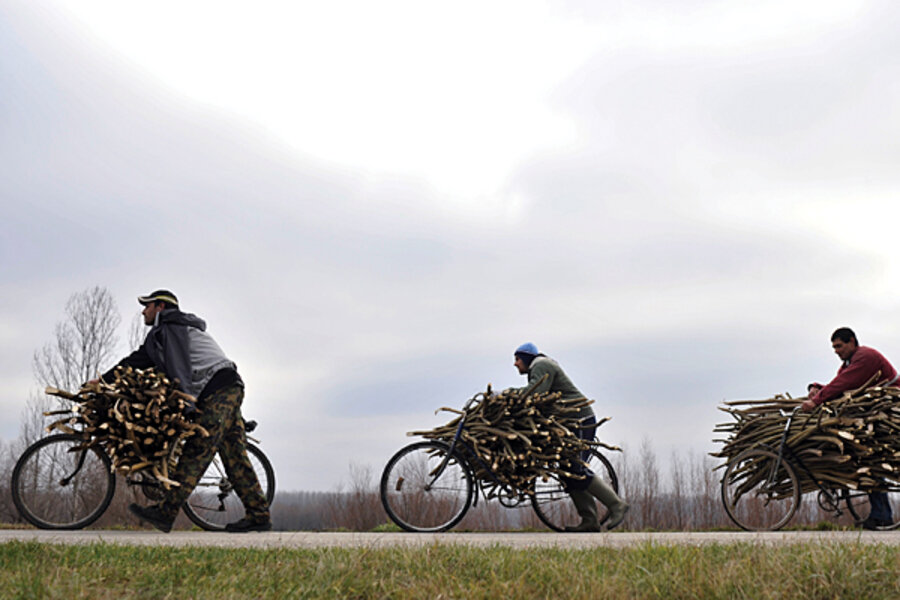Carbon offsets: How a Vatican forest failed to reduce global warming
Loading...
| Budapest, Hungary
This four-month multimedia investigation by reporters on five continents is a joint project of the Monitor and the New England Center for Investigative Reporting. It was funded, in part, by The Deer Creek Foundation.
Russ George described himself as a man of vision. He certainly envisioned making money.
The San Francisco promoter saw the profit of promising to remove carbon dioxide from the air, and selling that promise as carbon offsets to polluters, a plan he touted in interviews, press releases, and even to a congressional committee.
He just needed seed money. Nelson Skalbania, a high-profile Canadian real estate trader who had spent a year wearing a court-supervised electronic bracelet for a conviction in Canada of misappropriating $100,000 in investor funds, was just the kind of “green angel” – as Mr. George called him – who would put up the money.
With Mr. Skalbania’s backing, George bought the 152-foot research vessel Weatherbird II, repainted it with his new company name – Planktos – and hired a crew to sail for the Galapagos Islands in summer 2007.
His plan was to enlist one of nature’s carbon sponges, algae. He’d scatter a fertilizer of iron dust on 2.4 million acres of the South Pacific, he announced. In three weeks, it would produce a massive bloom of phytoplankton algae, which would inhale carbon dioxide, then sink with the carbon. George would sell his estimate of the absorbed carbon as “carbon offsets” at $5 a ton and make millions.
The Weatherbird II was under sail preparing to scatter 50 to 100 tons of iron dust when an outcry stopped it. Scientists said there was no way to tell what the iron or algae would do to the ocean environment. Diplomats cited treaties against dumping at sea. The captain of a Sea Shepherd Conservation Society ship threatened to ram the vessel. The Weatherbird II diverted to the Atlantic.
But George already was working on another plan: to plant millions of trees in rural Hungary and sell the carbon dioxide those trees could be expected to absorb.
He formed a Hungarian company, KlimaFa – “Climate Trees.” His publicity strategy: Present the Vatican with carbon offsets to make the Holy See carbon neutral based on the trees he’d plant. The photo of George handing Cardinal Paul Poupard the offset certificates at the Vatican on July 5, 2007, went worldwide.
In the glow of that publicity coup, George offered offsets for sale on his Planktos website. There are no public records of how much he sold. But with the growing outcry over the sea-seeding scheme, Planktos abruptly closed in December 2007.
KlimaFa – and the Vatican’s still unfulfilled offsets – were left in the hands of a Budapest partner, David Gazdag. He blogged a few times about the project, occasionally stopped by government offices to talk, but planted no trees.
“This is a problem,” Gyorgy Dallos, a World Wildlife Federation official, said in Budapest. Carbon offsets create “false hope” if they’re not real. The Vatican’s emissions, he noted, are not neutralized.
Few of the players want to talk about that problem. Mr. Gazdag agreed to an interview in Budapest, then canceled. A Vatican spokesman says “the case is being studied to take legal action in order to defend the Vatican’s reputation.” The Hungarian government, once an enthusiastic supporter of the project, now wants no part of it. Erika Hasznos, Hungary’s chief climate policy officer, walked out of an interview when asked if KlimaFa had submitted applications for the project.
George created another website in 2008, announcing a new business, Planktos-Science. He did not agree to an interview. He replied by e-mail that this story seemed a “potentially hostile piece” and insisted his new company is “no longer affiliated with the now defunct” old company he ran.
In the impoverished village of Tiszakeszi, where KlimaFa trees were to be planted, Mayor Kiss Lajos looks forlornly over the empty space along the Tisza River where George had promised to plant “the Vatican Forest” and create hundreds of jobs.
“We felt honored because the Vatican chose our village,” he said. “Now we feel sorry.”
This article was written and reported by Doug Struck of the New England Center for Investigative Reporting, with contributions from reporters Ben Arnoldy in India, Sara Miller Llana in Panama, Ilene R. Prusher in Israel, Kathy Marks in Australia, and Katy Jordan and Tyler Maltbie in Boston.
1. INTRODUCTION: Buying carbon offsets may ease eco-guilt but not global warming
2. How the "Vatican Forest" was felled before it grew
3. An offset gone wrong: Green windmills aggrieve Indian farmers
4. Using the green cloak of "certification" to market a plantation in Panama
5. Is Dave Matthews' carbon offsets provider really carbon neutral?







